Thinking about giving your home a fresh look but feeling anxious about the price tag? Yeah, it’s a common worry. Setting a realistic budget for a redesign can be tricky, and honestly, plenty of people end up stressed or with projects that just stall out.
Remember to repin your favorite images!
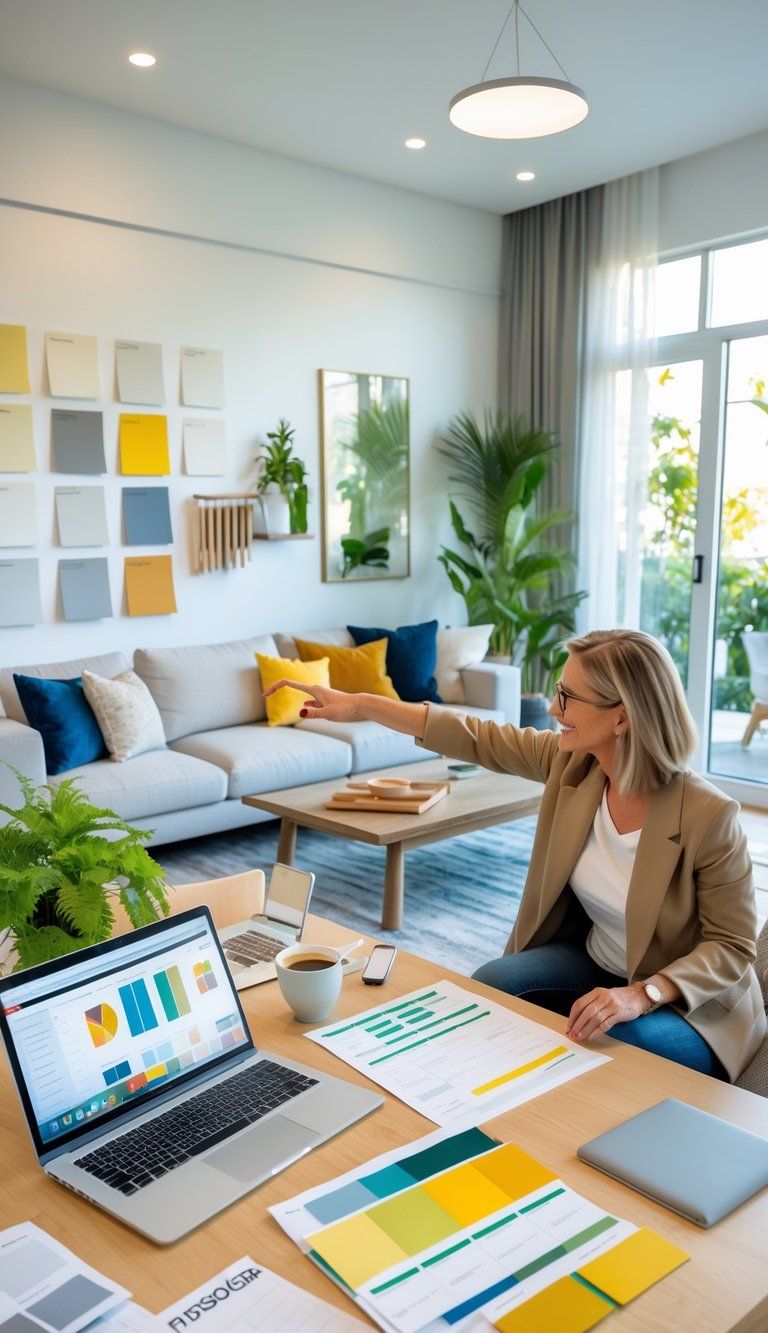
Home exterior remodels usually run anywhere from $15,000 to $80,000. Interior renovations? Those swing a lot depending on what you want to do. If you’re gutting a whole house, plan for at least $50 per square foot. For a 2,000-square-foot place, you’ll want a minimum budget of $100,000.
Before you start swinging a hammer, jot down all your material and labor expenses. People who budget smartly tend to focus on upgrades that make their homes more comfortable and boost value. Swapping out paint or fixtures can totally change a room for less, but if you’re moving walls or changing layouts, expect to spend more.
Understanding Home Redesign Budgets
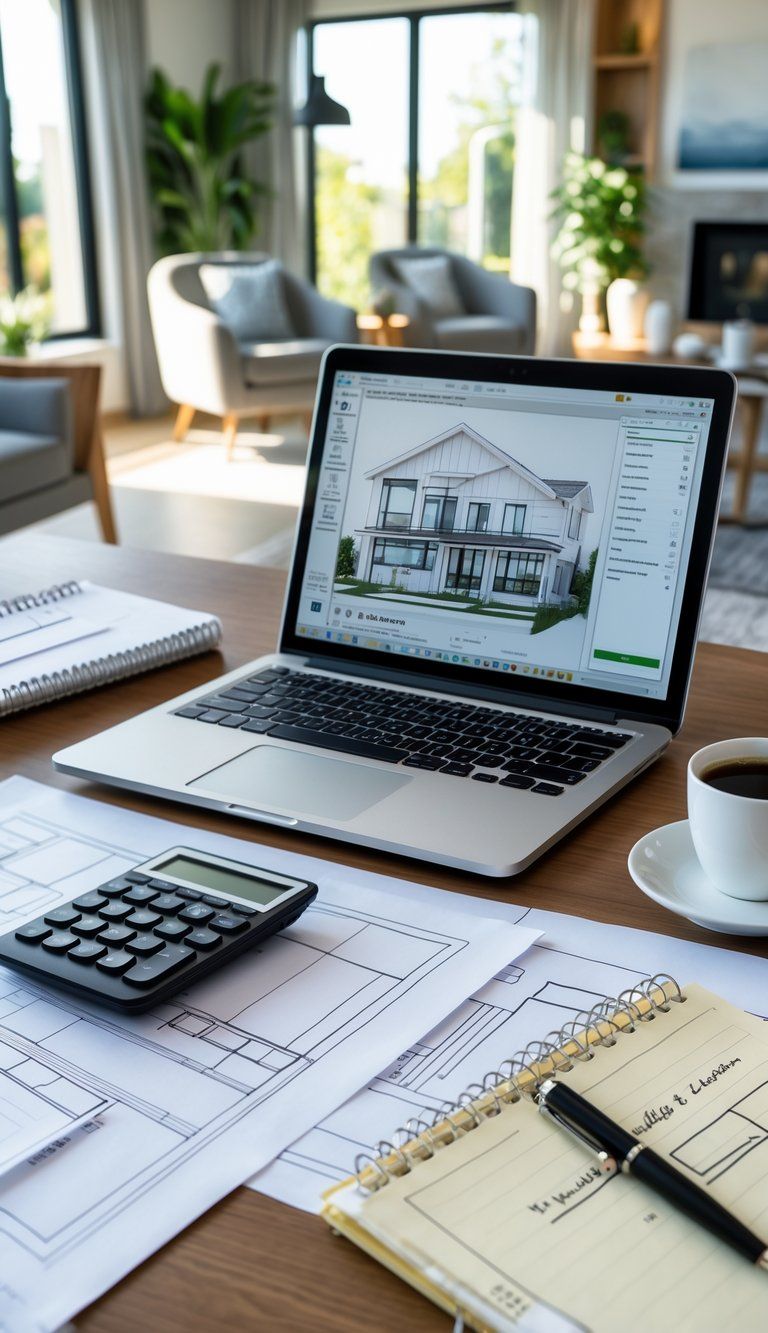
Before you dive into a redesign, get clear about your limits and the real costs. Most homeowners shell out between $10,000 and $42,000 for remodeling, but those numbers can jump depending on which rooms you’re tackling and the materials you pick.
Defining Your Renovation Goals
Figure out what you want from your redesign. Is this for your own happiness, or are you hoping to boost your home’s value? According to the 2024 US Houzz & Home Study, 56% of homeowners did renovations in 2023, and the median spend was $24,000.
Try asking yourself:
- Which rooms do you actually want to redo?
- What’s essential, and what’s just a bonus?
- Are you planning to stick around for years, or is this a quick fix?
That “percentage rule” can help. Don’t spend more on a room than its share of your home’s value. Kitchens usually make up 10-15% of the total value, so keep your kitchen budget in that ballpark.
Major Cost Factors Affecting Redesign
A few big things really shape your budget:
- Materials quality – Basic stuff vs. luxury can triple your bill.
- Labor costs – Usually 20-35% of your total.
- Project scope – Are you just painting, or knocking down walls?
- Where you live – Labor rates change a lot by region.
Designers add another expense. They typically charge $450-$1,500 per room or about 10% of your budget. Architects might bill $100-$250 an hour, or 10-20% of your total.
Don’t forget permits, surprises behind the walls, or maybe even paying for a hotel if you have to move out. Add a 15-20% buffer for those “just in case” moments.
Estimating the Total Project Scope
Renovations usually cost $10-60 per square foot, depending on how complicated things get. Say you want to redo a 130-square-foot room—you’re looking at $1,300 to $7,800.
Break things down like this:
| Category | Budget Percentage |
|---|---|
| Materials | 40-50% |
| Labor | 20-35% |
| Design fees | 5-15% |
| Permits | 1-5% |
| Contingency | 15-20% |
If the total feels too high, do the work in phases. Focus on what really needs fixing first.
Some projects pay off better than others. Kitchens and bathrooms usually give you the best return on investment, while a home theater might not add much value compared to what you spend.
Real Numbers: Typical Home Redesign Costs
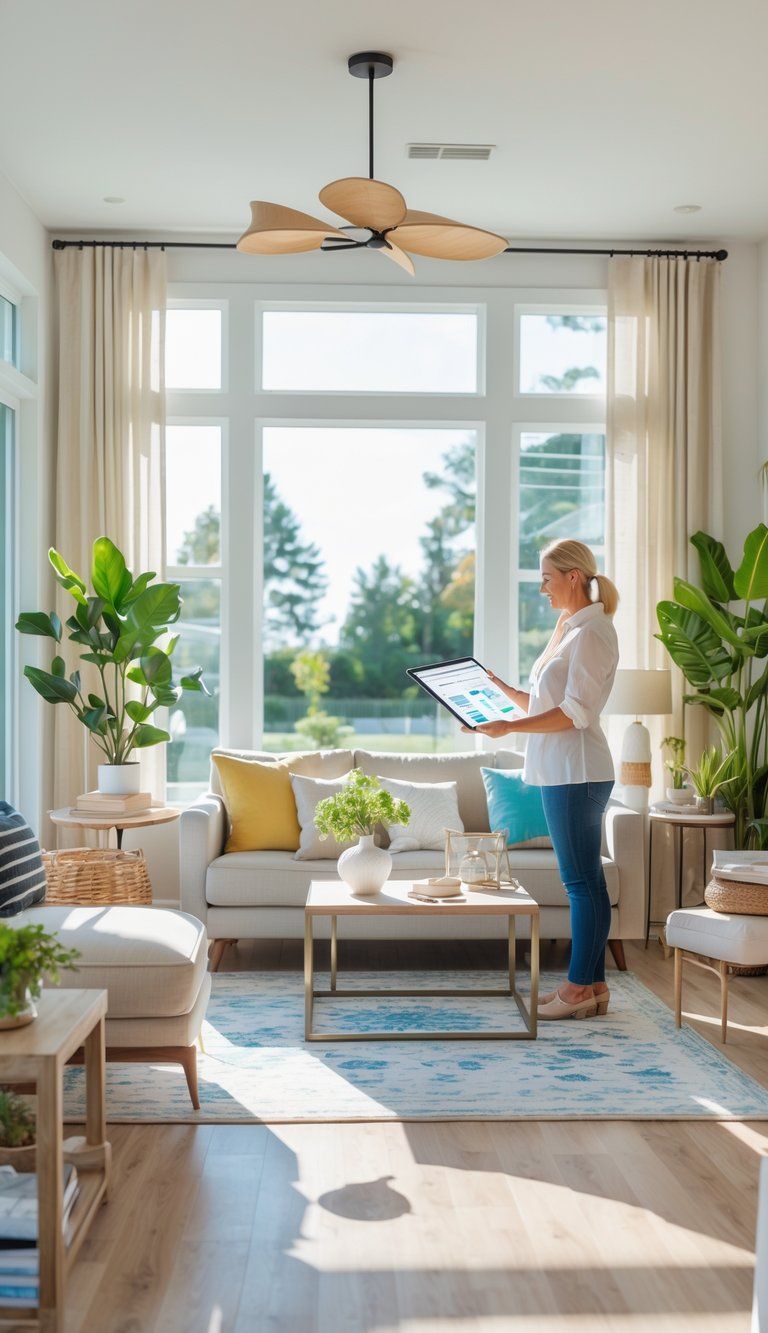
Knowing what people actually spend can help you set a budget that’s not a fantasy. Most folks land somewhere between $19,500 and $88,400 for renovations, and a bunch of stuff can change that number.
Average Cost To Renovate a House
For a 1,250-1,600 square foot home, the typical renovation costs about $52,275. That’s just an average, though—your project could be way less or way more. If you’re only doing cosmetic updates and skipping the big repairs, you might get away with $20,000-$35,000 for a 2,500 sq.ft. house.
Kitchens eat up the biggest chunk of the budget. Standard cabinets run $160-$380 per linear foot, but if you want custom, you could pay up to $1,000 per linear foot.
Bathroom remodels range from $3,500 to $25,000+, depending on what you pick and how much you change. Unexpected issues or last-minute changes can really drive up the price.
Cost Per Square Foot Explained
People often use cost per square foot to ballpark what they’ll spend. Across the country, it’s usually $15 to $60 per square foot, depending on how fancy you get.
Basic stuff—paint, minor repairs, simple fixtures—runs $15-25 per square foot. If you’re doing more, like new floors and better fixtures, expect $30-45 per square foot.
Going high-end? You could pay over $60 per square foot, especially if you want custom work or structural changes. City dwellers usually pay more than folks in rural areas.
To get a rough idea, just multiply your home’s square footage by the cost range that fits your project.
Remodeling Calculator Tools
Online remodeling calculators can give you a starting point before you talk to any contractors. Most ask for your location, home size, and what you want to do, then spit out a ballpark estimate.
Sites like Remodeling.com and HomeAdvisor.com have free calculators with national averages for different projects. They’ll even break costs down by room or project.
A handy rule: don’t spend more on a room than its share of your home’s value. If your kitchen is 10% of your home’s value, keep your kitchen budget to 10% of the total.
Just remember, these calculators aren’t gospel. Always get at least three quotes from contractors to see what’s realistic for your project. The calculators are a good way to set expectations before you get into the weeds with pros.
Room-By-Room Breakdown: Budgeting Essentials
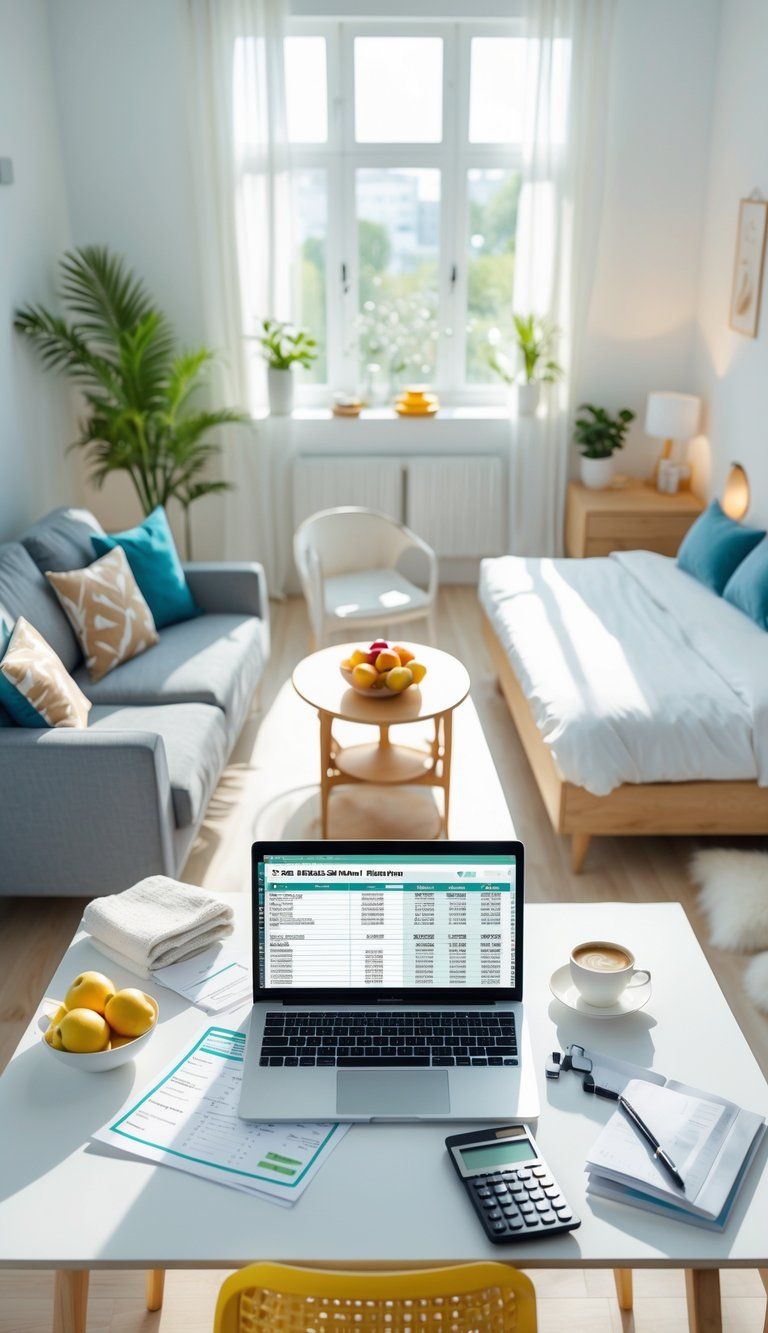
Every room comes with its own price tag, and knowing the usual ranges can help you avoid sticker shock.
Kitchen Remodel and Kitchen Renovation Costs
Kitchen remodels often cost between $25,000 and $90,000. That’s a lot, but kitchens add real value.
Budget breakdowns usually look like this:
- Cabinets: 30-35% ($7,500-$31,500)
- Appliances: 20% ($5,000-$18,000)
- Countertops: 10-15% ($2,500-$13,500)
- Labor: 20-25% ($5,000-$22,500)
- Fixtures and finishes: 10-15% ($2,500-$13,500)
Quick tip: If your cabinets are solid, consider refacing instead of replacing—they’ll look new for half the price.
Quality matters here. Pick durable countertops and reliable appliances, not just what’s trendy right now.
Bathroom Renovation and Remodel Budgeting
Bathroom remodels usually run $10,000 to $30,000, but a fancy master bath can blow past $50,000.
Typical bathroom costs:
- Fixtures: $1,500-$8,000
- Tile work: $2,000-$10,000
- Vanity and storage: $1,000-$5,000
- Labor: $3,000-$10,000
- Plumbing updates: $1,000-$3,000
Small bathrooms can be cheaper, but you might need to get creative with space. Water-saving fixtures can cut your bills in the long run.
A mid-range bathroom remodel usually returns 60-70% of its cost if you sell.
Basement Remodel Estimates
Basement remodels generally cost $25-$50 per square foot, so finishing a 1,000-square-foot basement will set you back $25,000 to $50,000. The condition of your basement and what you want to add really change the price.
Big basement expenses:
- Waterproofing: $2,000-$7,000—do this first!
- Framing and drywall: $3,000-$10,000
- Flooring: $2,000-$7,000
- Electrical work: $2,500-$5,000
- Plumbing (for bathroom/bar): $3,000-$8,000
If your basement is unfinished, it’ll cost more than sprucing up a partly finished one. Open layouts can help save on framing.
Adding a bathroom makes the space way more usable, but it could tack on $10,000-$15,000, especially if you need new plumbing.
Material and Labor Costs Explained
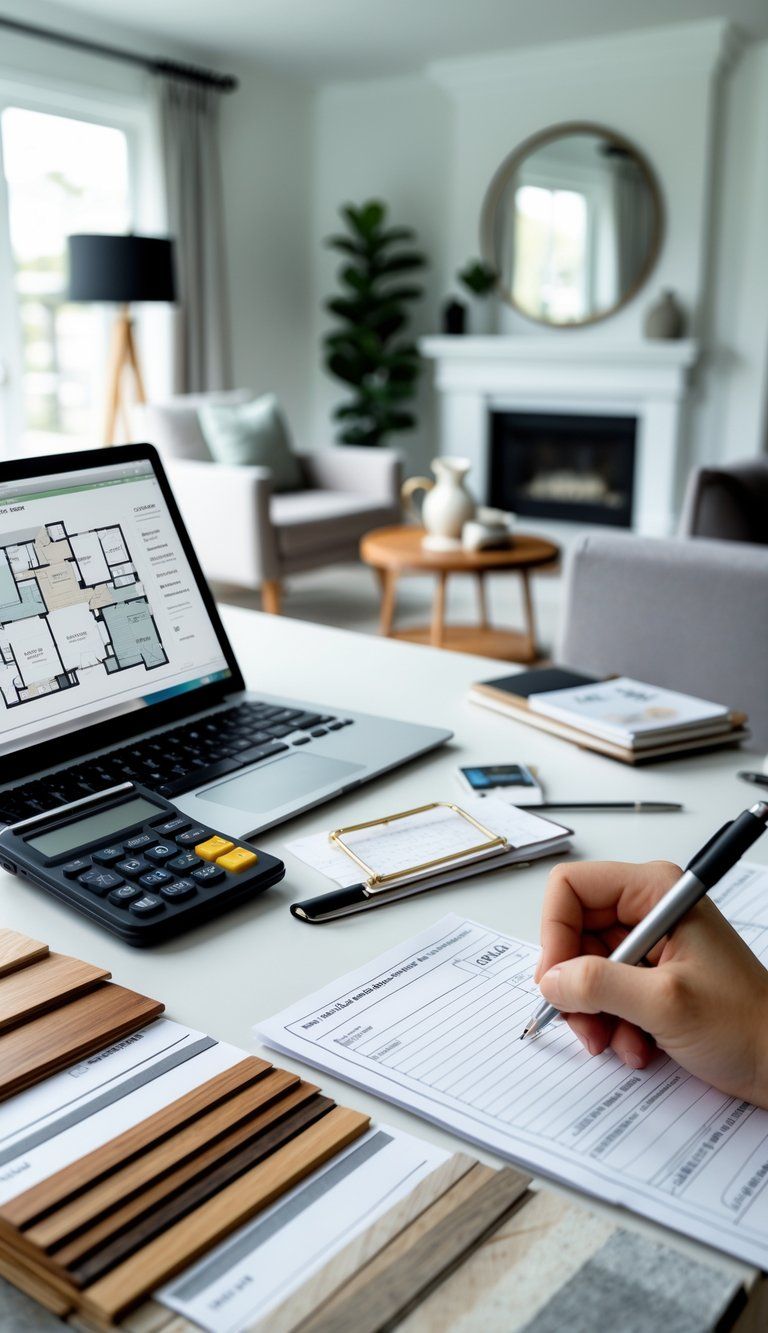
You need to know how materials and labor split up your budget if you want to plan accurately. The type of project and finishes you choose make a huge difference.
Quality of Materials and Price Ranges
Materials usually take up 40-60% of your budget. The gap between basic and high-end stuff is pretty wild.
- Kitchen cabinets: $100-300 per linear foot for stock, $500-1,200 for custom
- Flooring: $2-5 per square foot for laminate, $8-25 for hardwood
- Countertops: $15-40 per square foot for laminate, $40-200 for stone
Bathrooms eat up a lot in materials—think fixtures, tile, and plumbing. A regular toilet might be $100-300, but a premium one can be $500-1,500.
Higher-quality materials last longer, so sometimes it’s worth paying more upfront. Think about how long you’ll stay in your home before splurging.
Labor Costs and Contractor Fees
Labor often makes up 40-60% of your costs, and some projects are just way more labor-heavy. Structural work, especially, can cost 4-8 times more in labor than materials.
Contractors usually charge in three ways:
- Fixed price for the whole job
- Cost-plus (materials + labor + a markup)
- Hourly rates ($50-150 per hour, depending on what they do)
Labor costs change based on:
- Location: Cities cost 15-20% more than rural spots
- Project complexity: Plumbing and electrical work always cost more
- Season: Spring and summer can be pricier since everyone’s renovating
Always get several quotes, but don’t just pick the cheapest. Licensed, experienced contractors might charge more, but they usually do better work.
Structural Changes and Major Systems

When you start changing your home’s structure or major systems, costs can climb fast. These jobs touch the bones of your house, so you’ll want skilled pros on the job.
Addressing Plumbing and Electrical Work
Plumbing and electrical updates can get expensive fast. Licensed plumbers usually charge $65-120 per hour, and if you need a full system overhaul, expect to pay around $10,000-12,000 for an average home.
When you update plumbing, keep these things in mind:
- Pipe material (copper will cost more than PEX)
- How easy it is to reach existing pipes
- Local code requirements
Electricians don’t come cheap, either. Rewiring a whole house can run $8,000-15,000, depending on how big and complicated your place is. Upgrading your electrical panel usually lands in the $1,200-4,000 range.
You’ll probably have to open up some walls, and that means extra costs to fix things up afterward. Set aside an extra 15-20% for unexpected issues—trust me, surprises pop up once you start opening walls.
Evaluating Roofing, Siding, and Windows
Your roof, siding, and windows do more than just make your house look good—they protect you from the weather and impact energy efficiency. New roofing typically costs $5,000-12,000, depending on what materials you pick and how big your home is.
Swapping out windows? You’re looking at about $300-1,000 per window if you hire a pro. Energy-efficient windows cost more up front, but they can save you money on utility bills down the road.
Siding replacement costs can swing a lot:
- Vinyl: $5,000-15,000
- Fiber cement: $10,000-25,000
- Natural wood: $15,000-30,000
These exterior upgrades usually pay off pretty well. New windows can return 70-80% of their cost when you sell. It’s worth spending a little more on quality materials and good installation for these important features.
Cosmetic vs. Whole Home Renovation Costs

Home renovations come in all shapes and sizes, and the costs are all over the map depending on what you want to do. Knowing the difference between simple cosmetic changes and a full-blown renovation helps you budget smarter.
Cosmetic Renovation Budgeting
Cosmetic renovations stick to surface-level improvements, so you’re not tearing down walls or anything like that. These projects usually run between $3,000 and $48,000, depending on your home’s size and the materials you pick.
Some basic cosmetic updates might be:
- Refreshing wall colors
- Swapping out light fixtures
- Replacing cabinet hardware
- Adding new window treatments
- A little landscaping
HomeAdvisor.com says most homes spend $16,000-$48,000 on cosmetic renovations. These upgrades can give your home a whole new vibe without emptying your wallet.
If your place is around 1,250 square feet, plan on about $20,000 for a full cosmetic refresh. That can make a big difference without the headache of structural work.
Interior Painting and Finishes
Paint is still one of the cheapest ways to totally change a room. Interior painting usually costs $2-$6 per square foot, including labor and supplies.
For an average 12×12-foot room, you’ll probably spend:
- Economy paint: $200-$300
- Mid-range paint: $300-$650
- Premium paint: $650-$1,000
Want to add a little extra? Try:
- New crown molding: $7-$16 per linear foot
- Updated baseboards: $5-$8 per linear foot
- Wall texturing: $1-$3 per square foot
These finishing touches can really take your space up a notch. Fresh paint and new trim work together pack a serious punch for not a lot of money.
Flooring Cost Considerations
Flooring eats up a big chunk of any cosmetic renovation budget. Prices depend a lot on what you pick and how much space you’re covering.
Average flooring costs per square foot (materials + installation):
- Laminate: $3-$8
- Vinyl: $3-$10
- Engineered hardwood: $6-$12
- Solid hardwood: $8-$15
- Ceramic tile: $10-$15
For a 1,500-square-foot home, you’re looking at $4,500 to $22,500 to redo all the floors. If you just redo high-traffic areas, you can save some cash and still make a big impact.
Think about durability, too. Quality vinyl plank is tough, water-resistant, and lasts a long time. Engineered hardwood gives you that high-end look for less than solid hardwood.
Permits, Regulations, and Licensed Contractors
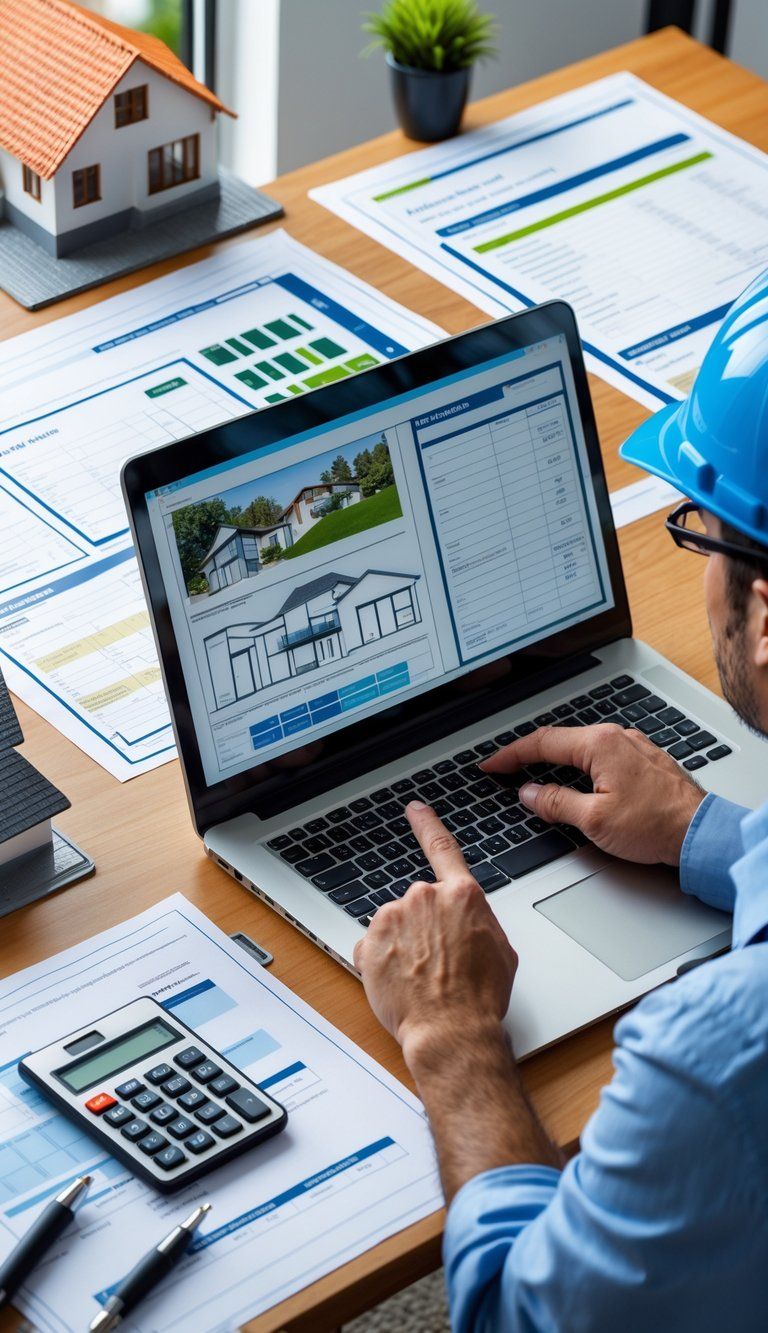
When you take on a home renovation, you’ll probably need some paperwork and professional help. Knowing your permit requirements and hiring the right people can really save you money and stress.
Securing Permits for Renovation Projects
Most renovation projects need permits before you can get started. Swapping out a couple of windows might only cost $50-$100 for permits, but bigger jobs will cost more.
If you’re adding a shed over 200 square feet, you’ll probably need a permit—those usually cost $50-$145. Add electricity or plumbing, and the price goes up.
Permit rules are different everywhere. Some cities are stricter than others. Before you start, check with your local building department about:
- Which projects need permits
- How much permits cost
- How long it might take to get approved
Contractors often roll permit fees into their estimates. Sometimes they’ll charge a service fee to handle the paperwork for you.
Why Hire Licensed Contractors?
Licensed contractors know the codes and keep your project legal. They help make sure you pass inspections without a hassle.
If you hire someone unlicensed, you might save money at first, but you could end up with:
- Failed inspections
- Work that needs to be redone
- Safety issues
- Insurance headaches if something goes wrong
Licensed pros usually carry insurance that covers you if there’s an accident. They also handle permits and set up inspections.
For tricky stuff like plumbing or electrical, always hire licensed professionals. These jobs have strict safety rules for a reason.
When you get quotes, ask about licensing, insurance, and how much experience they have with permits in your area.
Accounting for Unexpected Expenses

Redesigning your home? Get ready for surprise costs that can throw off your budget. Almost every renovation runs into something unexpected, so most pros say you should stash away 15-20% of your total budget just for these curveballs.
Preparing for Hidden Problems
Hidden issues lurk behind walls, under floors, or above ceilings. Water damage, electrical messes, and structural surprises pop up once you start tearing things apart.
A recent survey found 76% of homeowners hit at least one major surprise during their renovation. The most common headaches were:
- Electrical wiring issues: $1,500-$3,000 to fix
- Plumbing problems: $2,000-$4,500 to swap out old pipes
- Mold remediation: $2,000-$6,000 depending on how bad it is
Set up a contingency fund just for these problems. If you’re planning a $30,000 renovation, stash at least $4,500-$6,000 (15-20%) for the unexpected.
Handling Unexpected Issues
When something pops up, don’t panic—have a plan. Figure out if the issue is a safety or functionality problem. If it is, you can’t ignore it.
Say you find knob-and-tube wiring behind the walls. You’ll need to deal with it right away because of fire risks. You might have to cut back on decorative stuff to cover the $2,500 rewiring bill.
List out your must-haves and nice-to-haves before you start. Make a “sacrifice list” so you know what to cut if you need to. Maybe you keep the quartz countertops but go with cheaper lighting.
Don’t forget about time, either. Surprises usually add 2-4 weeks to your schedule, so build in a buffer to avoid headaches.
Maximizing Return on Investment

Smart renovations can bump up your home’s value and make it a nicer place to live. The right projects give you instant enjoyment and pay off when you sell.
Value-Boosting Renovation Choices
Wood window replacements usually let you recoup about 62% of the cost. That’s a win for energy efficiency and curb appeal.
Kitchen updates almost always pay off. Focus on moderate changes—think new countertops, cabinet refacing, or updated appliances. You don’t have to gut the whole space to get a fresh look.
Bathrooms are another good bet for ROI. Even little changes, like swapping fixtures or adding new lighting, can really improve the space.
Energy-efficient upgrades are getting more valuable all the time. Consider:
- Better insulation
- Smart thermostats
- Energy-efficient appliances
- Solar panels (if they make sense where you live)
Honestly, a deep cleaning gives you the highest ROI—studies say up to 3,650%! That’s kind of wild.
Balancing Budget and Resale Potential
Try to keep your home’s value in line with the neighborhood. As real estate agent Israel Ramos puts it, “Don’t exceed the ceiling for the neighborhood, or you won’t get your money back.”
Pick projects that make your life better and will appeal to future buyers. The best renovations check both boxes.
If you’re watching your budget, think about these swaps:
- Vinyl siding instead of fiber-cement
- Partial kitchen updates instead of a full remodel
- Refinishing hardwoods instead of installing new ones
Buyers care most about cleanliness, functionality, and energy efficiency—in that order. Spend your money fixing up those areas first.
Green updates can boost your home’s value by up to 23%. Even if they cost more at first, they’re usually worth it.
Conclusion: Planning Your Home Redesign With Confidence

Home redesigns don’t have to empty your wallet—if you plan things out, you might be surprised at how far your money goes. The right budget strategy can actually help turn your renovation ideas into something real.
Start by figuring out what percentage of your home’s value you should invest. A lot of experts usually say not to spend more than 10-15% of your home’s value on a renovation.
Build out a clear plan. When you work with professionals on measurements and materials, you dodge a lot of headaches and unexpected costs.
Always ask a few contractors for estimates. You’ll get a better sense of what things actually cost and who feels like the right fit.
Set aside about 15-20% of your budget for surprises. Renovations almost always throw a curveball or two.
Key Budget Breakdown:
- Planning and design: 5-10%
- Labor: 20-35%
- Materials: 30-50%
- Permits and fees: 5-10%
- Contingency: 15-20%
Think about what you really need versus what you just want. Tackle the big, structural stuff first—save the pretty details for later if you have cash left.
Keep checking your plans as you go. Stay open to changes, because, honestly, things rarely go exactly as expected.

